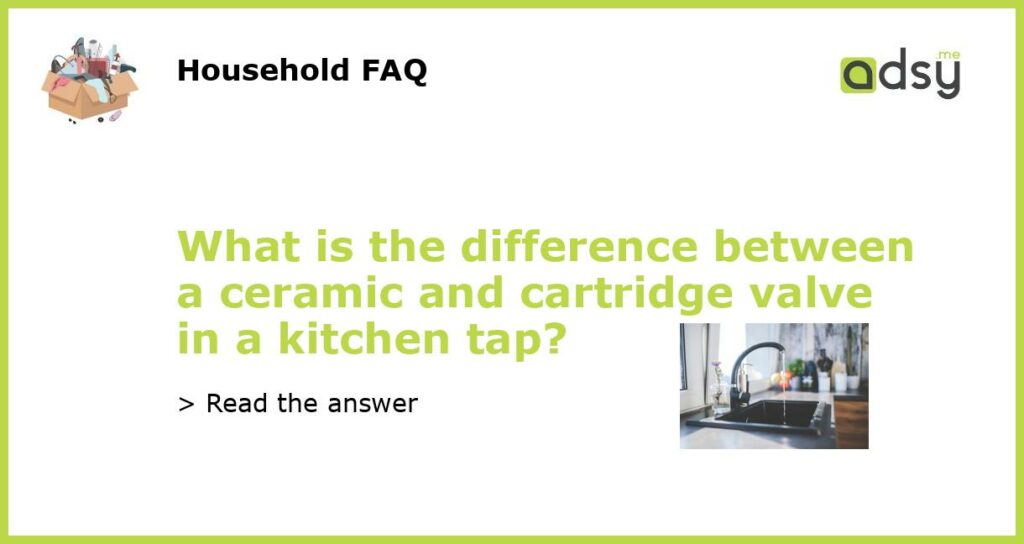Ceramic vs. Cartridge Valve: What’s the Difference?
When it comes to kitchen taps, two types of valves are commonly used: ceramic and cartridge. But what distinguishes the two?
The Basics of Ceramic Valves
Ceramic valves, as the name suggests, are made of ceramic material. They consist of two porcelain discs that control the flow of water. One disc stays in place while the other rotates to let the water flow or stop. Ceramic valves are known for their durability and longevity. They’re resistant to rust, corrosion and high temperatures. They’re also easy to clean, which makes them a low-maintenance choice for kitchen taps. But they tend to be more expensive than cartridge valves.
The Basics of Cartridge Valves
Cartridge valves, on the other hand, are made of brass or plastic. The valve has a hollow metal or plastic cartridge with rubber O-rings that control the flow of water. When the tap is turned, the cartridge moves, allowing the water to flow or stop. Unlike ceramic valves, cartridge valves come in two types: the compression cartridge and the washerless cartridge. Compression cartridges have a rubber washer that compresses against a metal valve seat to stop the water flow. Washerless cartridges do not have a washer, but use a ceramic disc to control the water flow. Cartridge valves are less expensive than ceramic valves, but they’re not as durable and may require more maintenance over time.
Ceramic Valve Benefits and Drawbacks
Ceramic valves are known for their durability and longevity. They’re resistant to rust, corrosion and high temperatures. They’re easy to clean and low-maintenance. However, they can be more expensive than cartridge valves and may require a higher up-front investment. Additionally, ceramic valves may not be as readily available as cartridge valves, which can be an inconvenience if you need a quick replacement.
Cartridge Valve Benefits and Drawbacks
Cartridge valves are less expensive than ceramic valves and come in two types: compression and washerless. They’re readily available and easy to find replacement parts if needed. However, cartridge valves are not as durable as ceramic valves and may require more maintenance over time. They’re also more prone to leaks and water damage, which can result in a higher cost of repairs.




![GRIFEMA G4008 Kitchen Sink Taps Mixer with Single Lever High Arc 360°Swivel, Stainless Steel Kitchen Mixer Taps 1 hole with Chrome Finish, Classic Design[Energy Class A+]](https://m.media-amazon.com/images/I/31OFHQlonbL.jpg)

